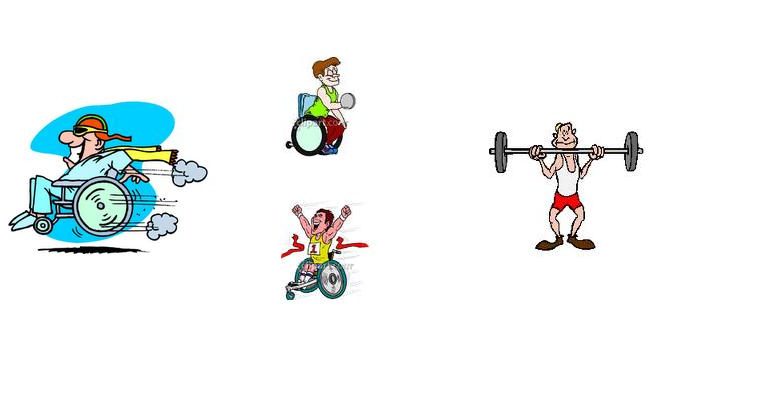
Disability and sport: could weightlifting be right for you?
With the Rio 2016 Paralympics starting next week, we’re talking to disabled people about the sports their involved in, how they got into it, and how you can do the same. This week we speak to Holly Ferrie about her experiences with weightlifting and how you too can find the right sport for you.
When it comes to exercise, many of us with mobility issues have had negative experiences. Up until two years ago, I considered myself one of them. But then I found myself in a different environment and realised that a lot of my issues had been due to a lack of knowledge, on both my part and the part of others teaching me. None of us knew how to tailor a sport for me and my disability, Ehlers Danlos syndrome (EDS).
After giving up my job due to a dip in my condition, I felt utterly demolished. I had tried to push myself too hard, which resulted in me having trouble just getting into work in the morning (working in London probably didn’t help). If I couldn’t handle getting to the train station, how was I meant to handle any kind of sport?
I knew that one of the biggest problems for me was my lack of muscle mass. Because EDS causes loose tendons and makes your limbs prone to dislocations, having more muscle can greatly support the overstretched connective tissue. However, how was I to put on muscle if exercising was dangerous for me because it could mean dislocation? In the past many people have pushed me too far with sport, causing injury and fear around the topic, so I was averse to trying anything. But I didn’t want to lose my next job.
So in 2014 I started going to the gym and began weightlifting. I started with the very basics before I even tried lifting a single weight. This included things like gentle tiptoe raises, walking 500m at a slow pace on the running machine, seated squats and balancing on a yoga ball. I had to ensure that each session I stretched my muscles twice as often as the average gym-goer, to reduce cramps and ligament strain.
I then began working out with a personal trainer that has extensive knowledge in the bodybuilding industry, as well as having a disability herself. I was also regularly joined in my sessions with a girl who had early-onset arthritis, which is basically the opposite of my condition. Together, the tree of us achieved a lot. We were united by our shared experience, despite all having very different conditions.
My trainer is fantastic. She taught me to recognise the difference between pain caused by my condition, and the less deep, more transitory pain caused by a good workout. This is a crucial difference, and it’s not something that other people can decide for you. A lot of sports injury can be caused by people not being aware of this difference, and pushing themselves until something snaps – and indeed, it’s this in the past that caused many of my injuries.
But with awareness, I came to recognise the pain from muscle ache that signified increased blood flow to a muscle group, as opposed to the rubber-band stretchy pain from a twinging tendon, the knife-edge pain from a trapped nerve or the bone-raw pain of an approaching dislocation. My trainer now pushes me past the good exercise-pain, but I know when to stop, when to say no, and she respects that.
Also important – I defined my goals. I wanted to put on muscle mass, not lose weight or look good. So I didn’t worry about my weight and ate protein-filled foods. It can be intimidating going into a gym, because there’s the feeling that everyone there is trying to look good. But once you stop worrying about that and just focus on your own goal, that paranoia will fade.
I started simple, with just 2kg weights and plain old bicep curls. Then I went on to tricep extensions, kickbacks, and barbell exercises, such as bench presses (lifting weights while lying on a bench) and deadlifts (lifting up weights from the floor to standing straight), increasing the weights in increments of 2kg.
There are a few things that stay the same. My average lift is about 10kg each session. I’ll never be able to deadlift my own body weight, and that’s fine. I want to be the best I can be for my body. It’s very important that those with mobility issues don’t measure themselves by others’ standards – because there is no standard when it comes to your personal best.
So for anyone else out there that has mobility issues and is looking to gain some strength, here are my top five tips.
1. Find a gym that’s easy to get to and that has good access.
I’d suggest popping in for a chat so you can get a clear picture of what it’s like. See what facilities it can offer you and don’t be afraid to ask if any of the gym’s trainers have experience with particular disabilities or health conditions.
Some gyms also offer online personal training sessions if you find it difficult to get to the gym or if your schedule prevents it. This can also be useful if you’re self conscious or have social anxiety.
2. Research what others with your condition have done.
Find out what medical experts recommend, what’s definitely off-limits, and what can be achieved with certain concessions or adaptations. Take as much information into consideration as possible so you can come to an informed decision, and have good responses available for anyone who wishes to help.
3. Inform your doctor or specialist.
If you’ve got a regular doctor or a specialist who deals with your condition, it’s a really good idea to have a chat with them prior to embarking on any health regime. Bear in mind though, while practically all doctors agree that increased exercise is beneficial, depending on what your health condition is, they may have reservations about you embarking on a new regime.
But it’s also important to remember that there aren’t absolute rules governing certain conditions and sports. For example, in general, someone with EDS would be advised not to do weightlifting or contact sports. My EDS experience differs from the next person’s, so I won’t run the risk of contact sports whereas I will weightlifting. Equally, others I know with the condition would be fine with netball, but wouldn’t go near the dumbbells.
Make sure your health specialist is not just responding to a ‘X is bad for people with Y’ mentality and is looking at your case in a personalised way.
4. Don’t let anyone push you too far – including yourself!
You know your own condition and how it affects you on a daily basis best out of everyone, so pay attention to what your body’s saying and stop if it gets too much. Above all, do not let fear, embarrassment or peer pressure contribute to worsening your health! Speak up constantly.
5. Exercise is not a cure-all.
We’re constantly bombarded with images in the media of exercise transformations, but again, there is too much focus on image and not on achieving your personal best. Going into something like this with the expectation that you’ll drastically change your body shape or capabilities is a sure-fire way to worsening your health – it’ll put you in a place where you may sacrifice your wellbeing for the particular end result.
Furthermore, there is no ‘end result’ because you’re never really ‘finished’. Stopping weightlifting for more than two weeks means I start to decrease muscle mass again, and I’m sure other sports are the same. Exercise is not something you stop when you achieve what you wanted to – it should be a constant in your life.
I hope this may help some of you who have considered getting into weightlifting, or weight training in general. Granted, it’s not for everyone, but I have found it to be a helpful and healthy addition to my life, and a much-needed tonic for some awful exercise experiences in the past!
By Holly Ferrie
Check out…
- Rio 2016 Paralympics: swimmer Ellie Simmonds in the spotlight
- Disability and sport: have you considered adaptive rowing?
- Rio 2016 Paralympics: Boccia player David Smith in the spotlight
Will you be watching the Paralympics? We certainly will, so follow us @DHorizons and on Facebook using the hashtags #Rio2016 and #Paralympics.
